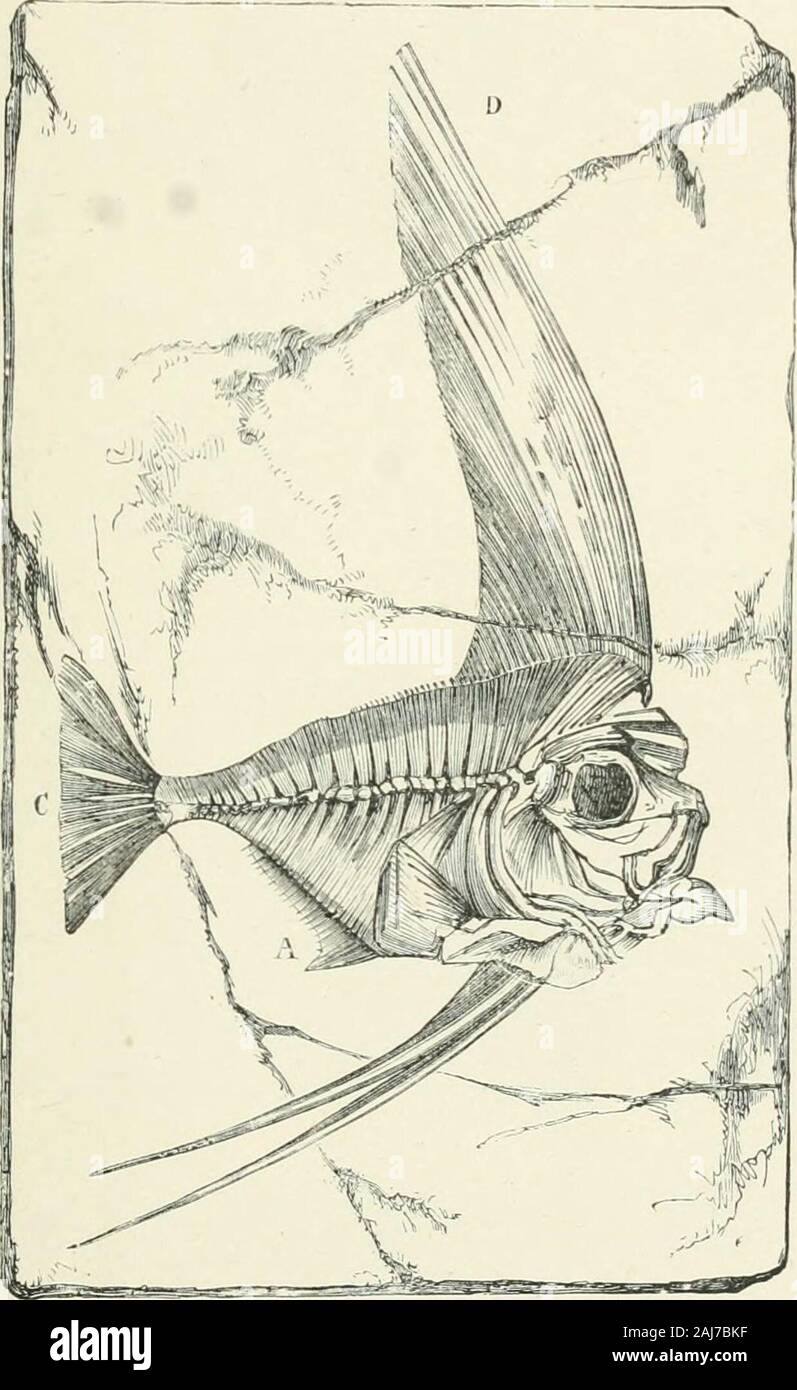A treatise on zoology . s, Ag. ; Hemiophorus, Ag. (Fig. 492) ;.Ductor, Ag.—Eocene, Italy. Caranx, Lac. (Fig. 491) ; Seriola, Cuv. ;Lichia, Cuv.; Mene, Lac.—wide range ; and Eocene, Italy. Selene, Lac.;Naucrates, Cuv. ; Trachynotns, Lac.; Paro^ms, Jen. ; Chorinemns, C. andV. ; Vomer, C. and V. Family Rhachicentridae. Differing from the preceding chiefly inthe absence of parapophyses. There are small scales. Rhachicentrus, Kp. ; Atlantic and Indian Ocean. 3. Mouth not protractile, the cycloid scales are usually small orabsent, the body becomes elongated, and there are no free spines, but therema

Image details
Contributor:
The Reading Room / Alamy Stock PhotoImage ID:
2AJ7BKFFile size:
7.2 MB (293.3 KB Compressed download)Releases:
Model - no | Property - noDo I need a release?Dimensions:
1238 x 2019 px | 21 x 34.2 cm | 8.3 x 13.5 inches | 150dpiMore information:
This image is a public domain image, which means either that copyright has expired in the image or the copyright holder has waived their copyright. Alamy charges you a fee for access to the high resolution copy of the image.
This image could have imperfections as it’s either historical or reportage.
A treatise on zoology . s, Ag. ; Hemiophorus, Ag. (Fig. 492) ;.Ductor, Ag.—Eocene, Italy. Caranx, Lac. (Fig. 491) ; Seriola, Cuv. ;Lichia, Cuv.; Mene, Lac.—wide range ; and Eocene, Italy. Selene, Lac.;Naucrates, Cuv. ; Trachynotns, Lac.; Paro^ms, Jen. ; Chorinemns, C. andV. ; Vomer, C. and V. Family Rhachicentridae. Differing from the preceding chiefly inthe absence of parapophyses. There are small scales. Rhachicentrus, Kp. ; Atlantic and Indian Ocean. 3. Mouth not protractile, the cycloid scales are usually small orabsent, the body becomes elongated, and there are no free spines, but theremay be a sej)arate .spinous dorsal fin. No parapophyses, except in theXiphiidae. SCOMBRIFORMES 465 Family Scoaibridae. The anal and posterior dorsal lins are brokenup behind into a series of finlets each su])ported by a radial. The spinousdorsal folds back into a groove. From thirty to fifty vertebrae, and thepectoral fins inserted high up. Gaatrockisma has enormous pelvics, whichfold into a^ventral groove (Fig. 494).. Semiophorus vclkans, Bl. ; Upper Eocene, Monte Bolca. (Fiom Guntlier, after Agassiz.);A, anal, C, caudal, and D, dorsal fin. Isurichthys, A. S. W. ; Palimphyes, Ag.—Oligocene, Europe. Eothynnus, A. S. W. ; Scombrinus, A. S. W. ; S})hyraenodus, Ag.—Eocene, Evirope.Cybium, Cuv. ; Auxis, Cuv. ; Thymius, Cuv. (Fig. 493)—Atlantic, IndianOcean ; and Eocene, Europe. Scomber, L. ; warm and temperate seas;and Oligocene, Europe. Sarda, Cuv.; Acanthocybiuvi, Gill ; Gastrochisma, Rich. (Fig. 494). 466 TELEOSTEI Family Trichiuridae. The pectoral fins are inserted low down, andtlie body much compressed. Starting from Mackerel-like forms, such asThyrsites, the body gradually acquires a very elongate, band-like sliape.At the same time the vertebrae increase in number, and the originallv